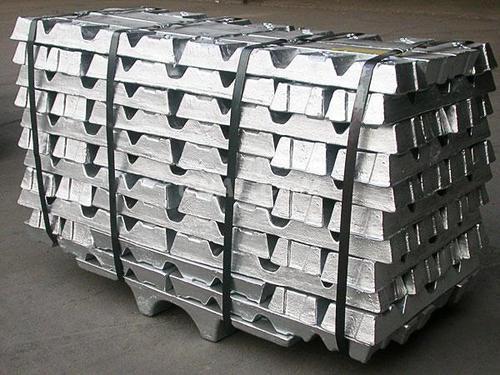ADC12 Aluminium: Properties, applications, and market trends
Team AL Circle
2024-03-07
Over the past few years, the importance of aluminium as a raw material has been notably increasing. Industries like automobiles, electronics, medical equipment, and construction use more aluminium due to its versatility and eco-friendliness. This growth is also fuelling the market for aluminium composite materials or alloys. One such alloy is ADC12 aluminium.

What is ADC12 Aluminium?
ADC12 Aluminium is a low-density, highly versatile aluminium alloy. In addition to aluminium, this alloy consists of copper, nickel, zinc, magnesium, and various other metals in different proportions. It is a modification of the ADC10 aluminium alloy and comes in handy when creating complicated geometric structures. The ADC12 aluminium alloy is commonly used in die casting.
Additionally, there are two classes of ADC12 aluminium alloys. The first one belongs to the Mercalloy family and is typically used for making aquatic equipment. The properties of this alloy make it resistant to corrosion caused by a salty atmosphere. The second kind contains percentages of magnesium that resist soldering.
What makes the ADC12 Aluminium alloy so versatile?
As a fusion of different metals, ADC12 aluminium, aka A383, is packed with various features, such as:
- ADC12 exhibits exceptional fluidity, which increases its castability. Therefore, the alloy is used to make complex structures and microstructures. Fluidity also helps manufacturers make intricate details on the surface with die casting.
- ADC12 has excellent thermal conductivity, which prevents automotive parts, electronic items, and devices from overheating. It allows the heat to dissipate quickly.
- ADC12 has a low density of 2.7 g/cm3. Therefore, it is an ideal material for making lightweight objects, like electric vehicle parts.
- ADC12 offers enhanced tensile strength that can withstand high-stress situations, thanks to the presence of copper and silicon. The alloy has a yield strength of 205 MPa.
The myriad applications of ADC12 Aluminium
The aluminium ADC12 alloy is making a mark in numerous industries. It can be commonly found in LED lights, power tools, valves, electric vehicles and more. Here are four common industries that use aluminium ADC12 alloy:
- Household appliances: Aluminium ADC12 is widely used in everyday household items like vacuum cleaners, washing machines and dryers, as it offers excellent dimensional stability. The strength of the alloys makes it a perfect choice for manufacturers.
- Automobile: Aluminium and aluminium alloys like ADC13 are commonly used in new-age vehicles like electric cars. The alloy significantly reduces the car's weight and enhances its performance. Thanks to its thermal conducting properties, aluminium ADC12 is used to make battery housings for electric vehicles. Moreover, A383 is employed to manufacture complex structures like chassis parts, motor brackets, etc.
- Machinery: Aluminium ADC12 is used in various machine parts that require high tensile strength and machinability. Some common ones are hydraulic pumps, bearings, and printing presses.
- Electronics: Since ADC12 or A383 alloy is a lightweight, corrosion-resistant composition, it is used to make portable consumer electronic items like laptops, tablets, and smartphones.
What is the market overview for aluminium ADC12?
Although not much was revealed about the future market trends for aluminium composite ADC12, there were some significant moments for the alloy last year. In the first half of December 2023, the price of ADC12 aluminium slightly waned but rapidly picked up at the end of the month. The holiday season led to sluggish demand for ADC12, and producers reported fewer new orders. However, the escalating prices of aluminium ADC12 drove downstream buyers to purchase more of the alloy for captive use. It was also predicted that the demand for aluminium ADC12 would remain low in early 2024 due to the Chinese New Year celebrations and the slowing down of the Chinese and Western economies.
The price of ADC12 aluminium increased in Japan by 2% in Q4 of 2023. Compared to the same quarter last year, the price skyrocketed by 81%. An array of factors is believed to be responsible for the price surge in Japan, including reduced Bauxite supply, increased demand, disturbances in the Panama Canal route, etc.
At the end of the fourth quarter of 2023, the aluminium alloy ingot faced plenty of roadblocks in North America. Fuelled by economic deceleration, demand and price levels fluctuated in the USA. The scenario was the same in Europe, except there was a balance in ADC12 aluminium demand and supply. Germany's market experienced a positive shift, and the automobile sector continued to enjoy steadfast supply.
To wrap up…
In addition to its versatile characteristics, low cost, and efficiency, ADC12 aluminium is a highly efficient aluminium alloy. Aluminium is becoming one of the essential raw materials in multiple industries. As the ascend continues, alloys like ADC12 will also find unique applications in multiple fields. In today's market, this alloy is highly sought-after and highly intriguing. Manufacturers prefer ADC12 aluminium as it meets very specific needs.
Categories
Raw Materials
Scrap
Consumables
Primary Aluminium
Secondary Aluminium
Equipment
Technology
Downstream Products
Finished Products
Utilities
Services
Others
Recent Blogs
Subscribe to newsletter
Connect with us












